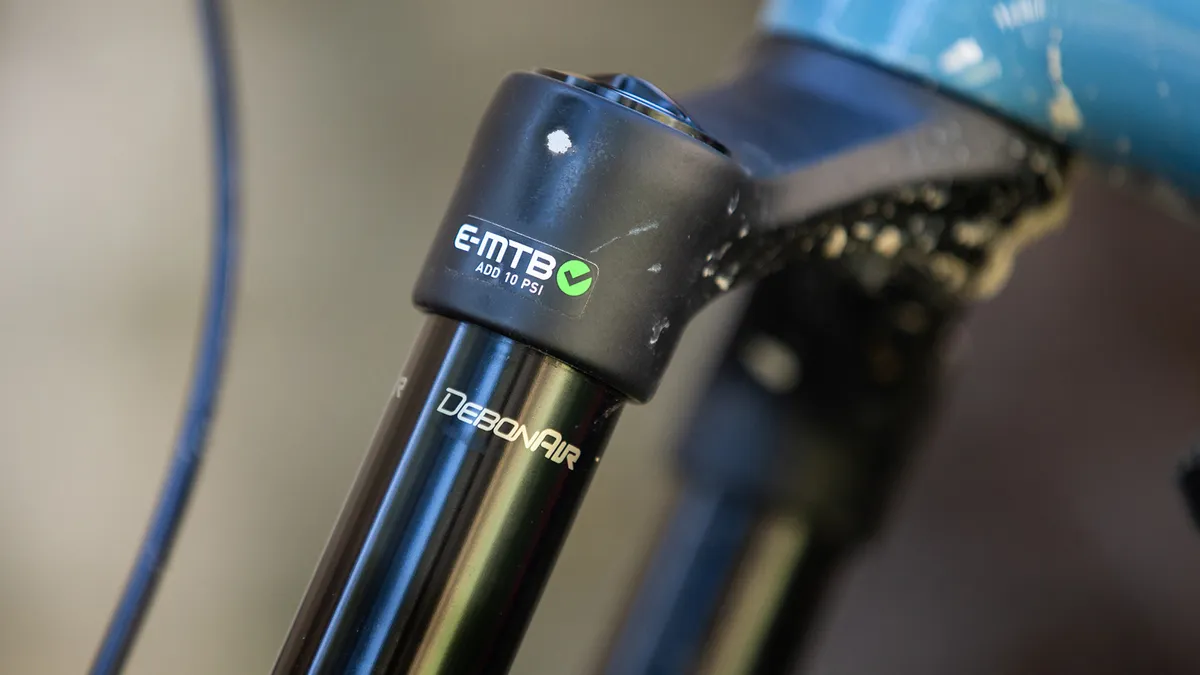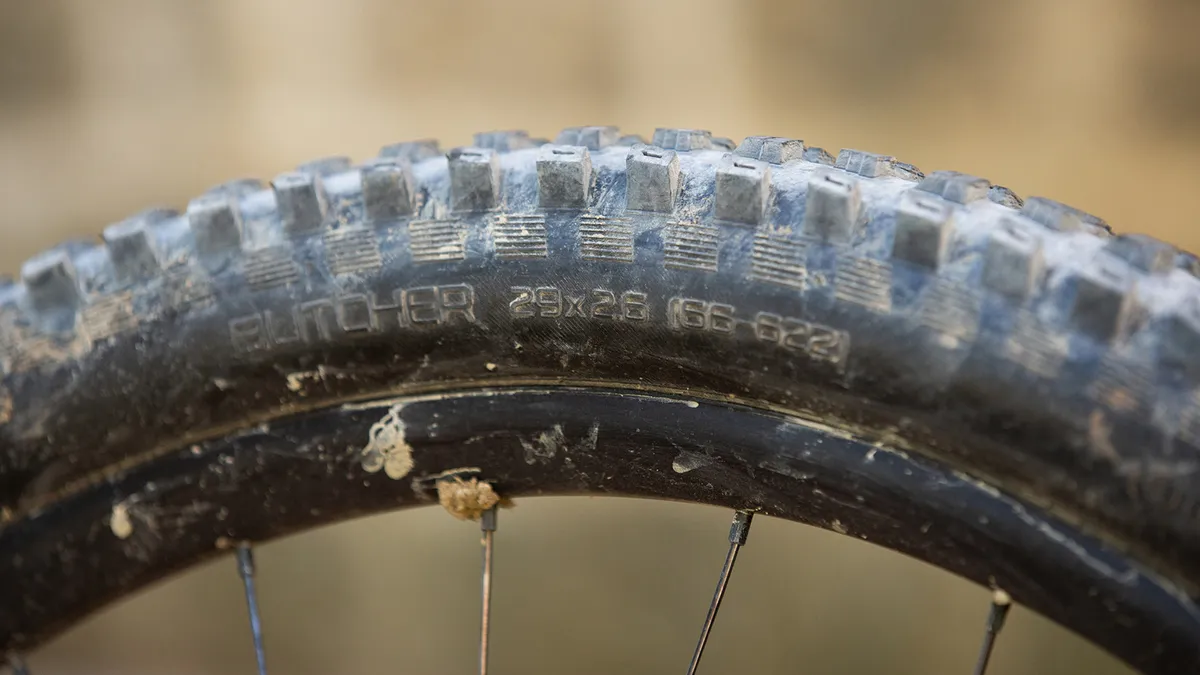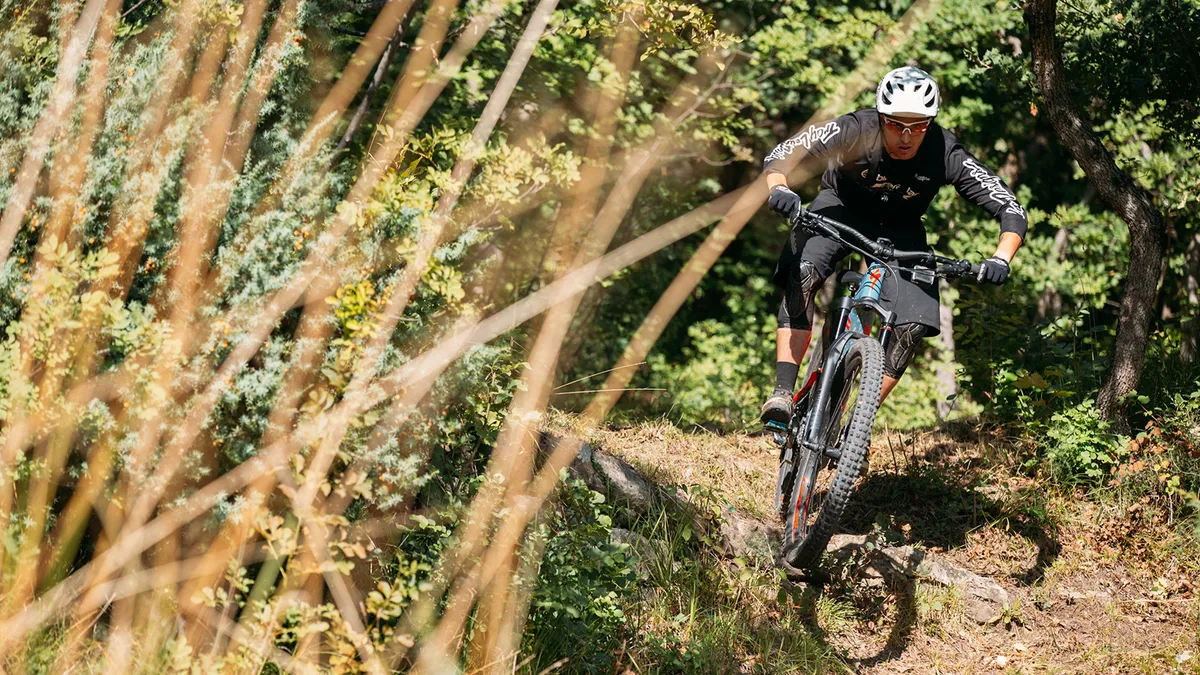The evolution of Specialized's Turbo Levo hasn't been a slow process. This latest model is an all-new bike from the wheels up.
- Would you race an e-MTB? Because electric enduro is now a thing
- MX meets MTB with the Schwalbe Eddy Current e-MTB tyre
Learning from the first generations of the Levo fleet and the latest Stumpjumper, Specialized has made dramatic changes to this new Turbo Levo. Built around 29in wheels, a longer, slacker design with a low centre of gravity and shorter back end. It's also upped the rear travel and developed a new motor, which is smaller, yet more powerful and thermal stable.
Also, a new battery provides up to 40 percent more range and there's brand-new software to keep you connected, too. What has stayed the same though is Specialized's commitment to making a mountain bike first and a pedal-assist bike second.
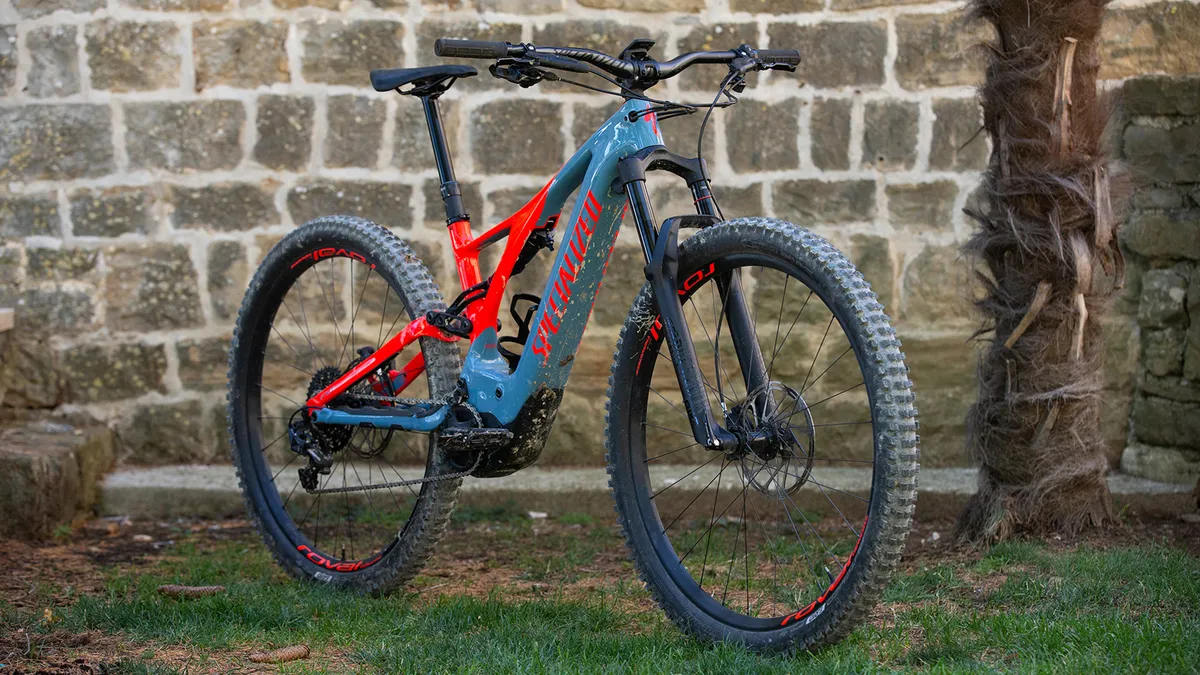
Specialized Turbo Levo Expert FSR spec overview
- Frame: FACT 9m Carbon w/ M5 alloy rear triangle, 29 Trail Geometry, integrated down tube battery, enclosed internal cable, Command Post routing, 148mm spacing, fully sealed cartridge bearings, 150mm of travel
- Rear shock: RockShox Deluxe RT3 w/ custom valve, 150mm of travel
- Fork: RockShox Pike RC29, 150mm of travel
- Stem: Specialized Trail, forged alloy, 4-bolt, 6-degree, S/M 40mm / L/XL 50mm
- Handlebar: Specialized Trail, 7050 alloy, 8-degree backsweep, 6-degree upsweep, 27mm rise, 780mm, 31.8mm clamp
- Grips: Specialized Sip Grip, half-waffle, S/M: regular thickness, L/XL: XL thickness
- Front brake: SRAM Code R, 4-piston caliper, hydraulic disc, 200mm
- Rear brake: SRAM Code R, 4-piston caliper, hydraulic disc, 200mm
- Rear derailleur: SRAM X1, 11-speed
- Shift levers: SRAM S700, single-click lever
- Cassette: SRAM XG-1175, 11-speed, 10-42t
- Chain: KMC X11ET, 11-speed w/ Missing Link
- Crankset: Praxis, 2D cold-forged alloy, custom offset, 165mm
- Chainrings: 32t, custom steel
- Rims: Roval Traverse 29, hookless alloy, 29mm inner width, tubeless ready, 28h
- Front hub: Specialized, sealed cartridge bearings, 15x110mm spacing, 28h
- Rear hub: DT Swiss 360, 3-pawl design, SRAM XD driver body, 12mm thru-axle, 148mm spacing, 28h
- Spokes: DT Swiss Revolution
- Front tyre: Butcher, GRID casing, Gripton compound, 2Bliss Ready, 29x2.6"
- Rear tyre: Butcher, GRID casing, Gripton compound, 2Bliss Ready, 29x2.6"
- Saddle: Body Geometry Phenom Comp, hollow Cr-Mo rails, 143mm
- Seatpost: Specialized Command Post 34.9mm, 130mm of travel (Size: Small), 160mm of travel (Sizes: M/XL)
- Motor: Specialized 2.1, custom Rx Trail-tuned motor, 250W nominal UI/REMOTE Specialized TCU, 10-LED state of charge, 3-LED Ride Mode display, ANT+/Bluetooth, handlebar remote with walk-assist
- Battery: Turbo M2-700, fully integrated w/ rock guard, 700Wh
- Charger: Custom charger, 42V4A w/ Rosenberger plug
- Wiring harness: Custom Specialized wiring harness
Specialized Turbo Levo Expert FSR frame development
Specialized has worked hard to make improvements to an already good bike, but this hard work is clear with the new Turbo Levo.
First up, the frame. Specialized has taken the three years of Stumpjumper development poured it into the Levo chassis. The bikes look remarkably similar. The Levo borrows the new sidearm, which asymmetrically connects the seat tube to the top tube, and significantly reduces undamped frame movement when the rear suspension is active, increasing both stiffness and control through rough terrain.
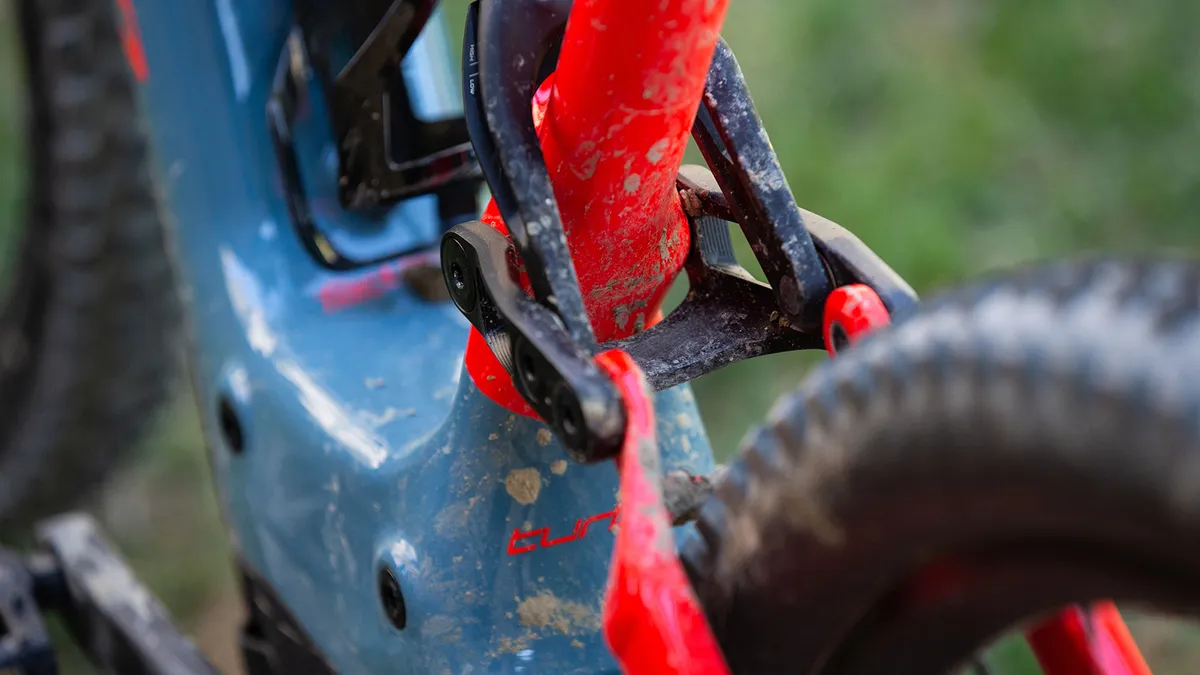
The linkage also now includes a bridge that runs behind the seat tube to provide additional strength. Specialized has boosted the travel up to 150mm from last year's 135mm, the same as the Stumpjumper Evo, to make it a more capable on the trail. Alongside this, Specialized has increased the progressivity of the rear end to help with the bigger hits this bike is now designed to take, and to help sit the bike higher in its travel when pedalling.
The bike now runs a metric shock size with standard eyelets front and rear, so you can change or upgrade to an after-market shock if you want to switch from the Specialized RX (recommended experience) tune. The Expert model uses a FACT 9m carbon fibre front triangle with a M5 aluminium rear-end.
Geometry-wise, the reach is extended by 25mm from 430mm to 455mm in size large, and the chainstays have been trimmed by 4mm reducing them to 455mm to help with the bike's agility.
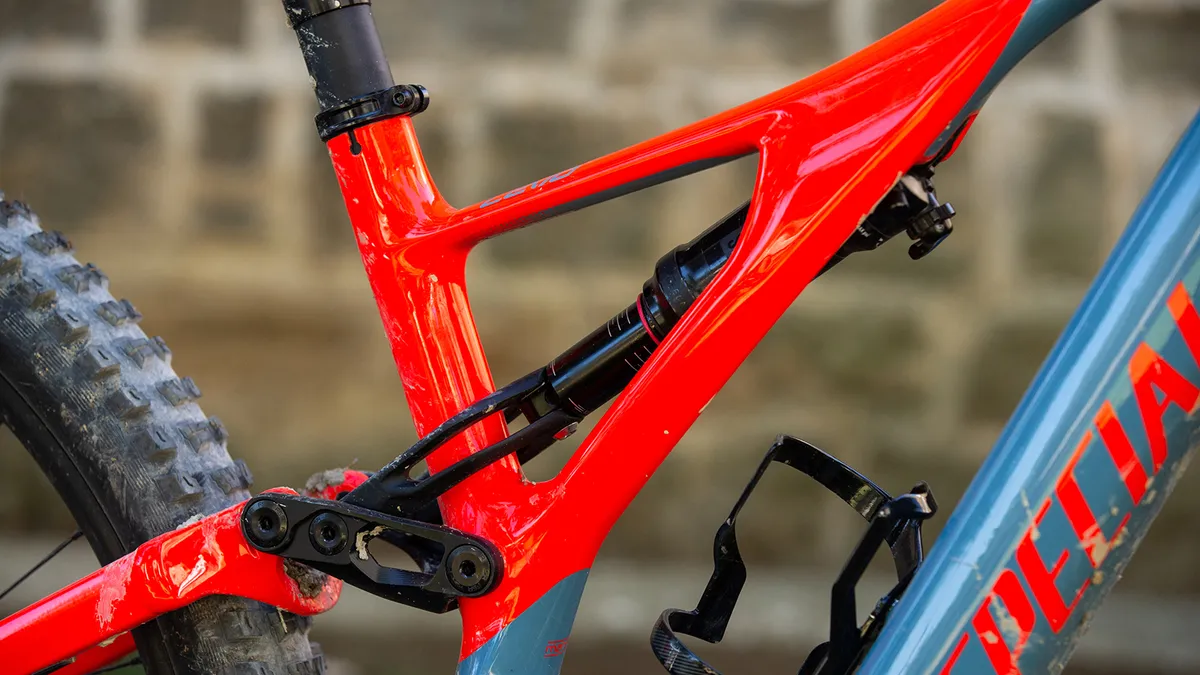
It comes with a very slightly slacker 66-degree (66.04 degrees over 66.1 in size L) head angle and a steeper seat tube for a better climbing position. Internal cable routing follows the frame's new sidebar, allowing for an uninterrupted down tube that can be made smaller as a consequence of not making space for the cables.
Specialized has built the latest Levo range around 29in wheels, choosing to run 2.6in tyres. "We wanted to give more precision and a less vague feeling from the trail. We believe this is the case with the 2.6in tyres. Also, you get more choice on which tyres and tread patterns with this set-up," says Specialized.
The frame can run 650b wheels with a recommended 2.8in or 3in tyre, and it comes with a flip chip, which can be run in a high or low position to keep the bottom bracket a similar height above the ground for both wheel sizes.
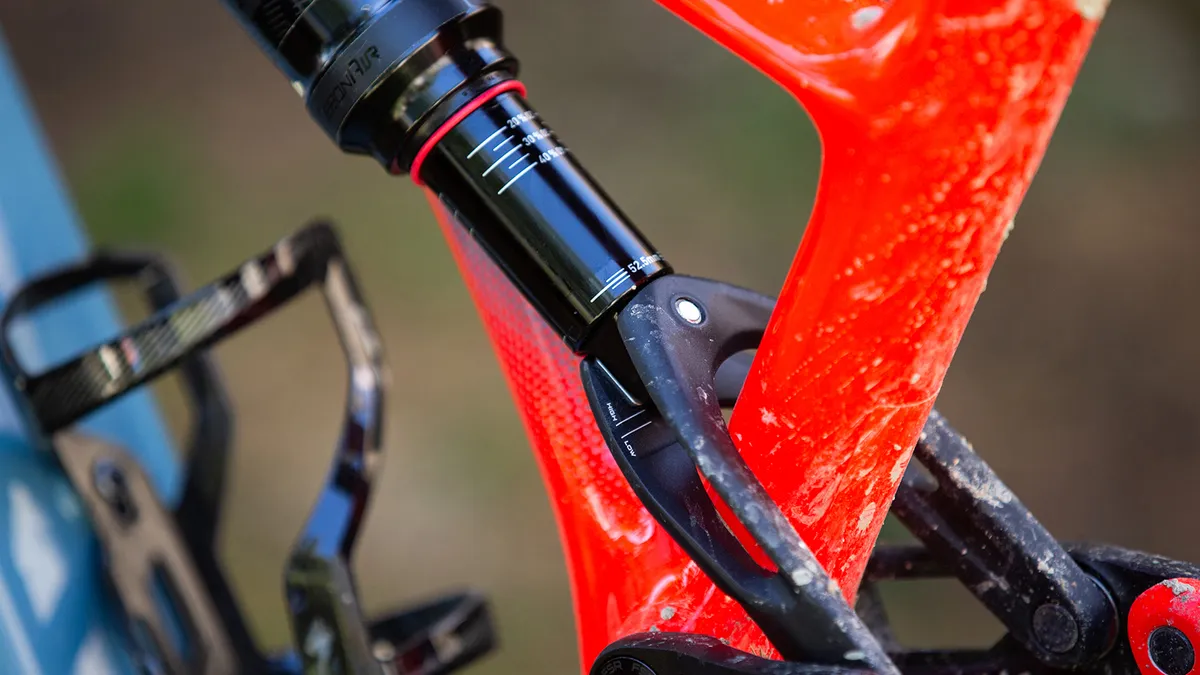
One of the most significant changes to the new bike is the new direct-to-frame motor mount. This has allowed Specialized to save a claimed 400g in weight by losing the motor mount bridge from the previous Levo.
The new aluminium frame, which comes on the Comp model and below, apparently weighs less than the previous S-Works carbon frame.
The motor and the battery
The new 2.1 motor from Specialized, built in partnership with Brose is now more powerful, up to 560W from 530W, and amplifies rider input by 410 percent over the 380 percent available on its 1.3 motor.
The power increase has come from using larger and wider magnets, which helped make a more thermal stable motor too. Even with this power increase, the new motor is approximately 15 percent smaller in volume compared to the previous design.

The motor also has entirely new electronics inside, which have been fully redesigned to provide additional thermal stability, so it shouldn't suffer the problematic sudden power loss that plagued Specialized in the past due to overheating.
To help with starting on steep climbs, the new motor has a torque figure of 90Nm across a range of 10–40rpm. Specialized also claims a 10 percent efficiency improvement over the old battery and motor at a lower cadence of around 60rpm.
The 2.1 motor is also significantly lighter, with an apparent 400g weight saving over the previous 1.3 motor. This has been made possible by using a full-magnesium motor housing.
Specialized still uses a belt drive, which means the motor is smooth and quiet and reduces vibration.
Along with the 15 percent volume reduction mentioned above, the new direct-to-frame mounting has allowed Specialized to find more space in the frame to run a larger water bottle, or even a piggyback shock and water bottle, and trimmed 4mm from the chainstays while running 29in wheels.
The motor still comes with a torque sensor that measures the power input from the rider and will display the information on an external device, so effectively you have a free power meter too.
The charge time is around four hours for the 500Wh battery and six hours for the 700Wh battery
There is an improved walk assist with more power that will actually climb the bike up a hill and doesn't have a delay to activate.
The 2019 Turbo Levo bikes come with the new M2-series battery from Specialized. The S-Works and Expert model, tested here, now come with a 700Wh lithium-ion battery, boasting a potential 40 percent increase in range over the standard 500Wh battery that comes on the lower spec models.
This can be bought as an upgrade for £900 (international pricing TBC). The extra power is gained by using uprated battery cells and while they provide an extra 200Whs of battery power, the new battery weighs an additional 750g over the 500Wh battery.
Specialized uses its Battery Management System (BMS) to balance the 40 cells as best it can to provide a long battery life, claiming a lifespan of 65 percent over 500 charge cycles, (from full to empty) and to protect it from overcharging or under voltage.
The charge time is around four hours for the 500Wh battery and six hours for the 700Wh battery. Specialized has chosen slower charging to maintain battery health and expect most riders will recharge overnight. Due to the new frame and motor, it's not possible to retrofit the old batteries into the new Turbo Levo range, which has a smaller circumference down tube.
The placement of each cell has been optimised to provide an ideal weight distribution for better handling on the trail. You can charge the bike with the battery installed or uninstalled, entirely up to you, but Specialized recommends you wash the bike with the battery installed because it seals the frame and is waterproof when the charging port is closed (though best not to pressure wash it directly).
The battery also comes with an integrated frame protector which shields the down tube and acts as a handle to quickly insert or extract it.
Customise your ride
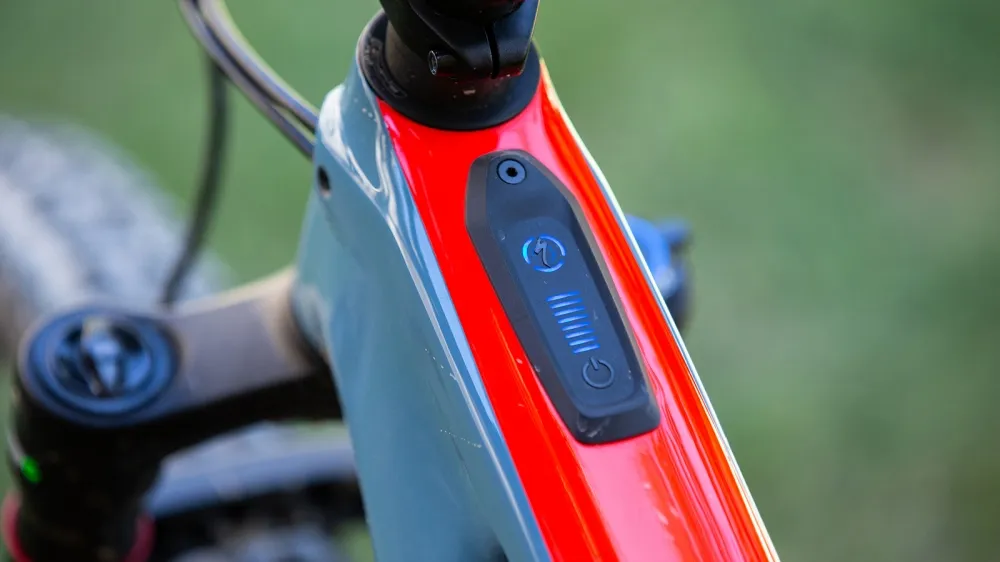
The new brain of the bike is the Specialized Turbo Connect Unit (TCU). It's a simple, unobtrusive display that sits in the top of the top tube and gives you the basics about the remaining battery, which pedal assist mode your in (Eco, Trail or Turbo) and turns the battery on and off.
The 10 LEDs on its display each represent 10 percent battery charge, so you can easily keep track of your usage. The TCU also connects your bike via Bluetooth or ANT+ to the Mission Control App and will link to other third-party ANT+ devices.
Another option is to purchase the additional Turbo Connect Handlebar Display (TCD) where you can view all your bike and ride data at a glance on your handlebars. I think this is a cool device, just a sting as it costs you an extra £70. From here you can view speed, distance, battery charge, mode, etc.
As well as making significant updates to the frame, motor and battery, Specialized hasn't forgotten about its software or Mission Control App.
Launching an updated app, which is available to download on Android and iOS operating systems, Specialized developed a brand-new user interface, which it claims to be more intuitive and user-friendly.
New features within the app include a stealth mode, which will turn off the LEDs on the TCU, yet pressing any button will illuminate them for three seconds before them turning off again.
Specialized has also introduced something called Shuttle mode. This makes it easier to reach maximum motor power with less required pedalling force, something to help when pedalling at a high cadence when your power output is lower, or for when you're just looking for a fast shuttle to the top of the mountain. In the app, the default setting is zero, but it can be adjusted to suit your preference.
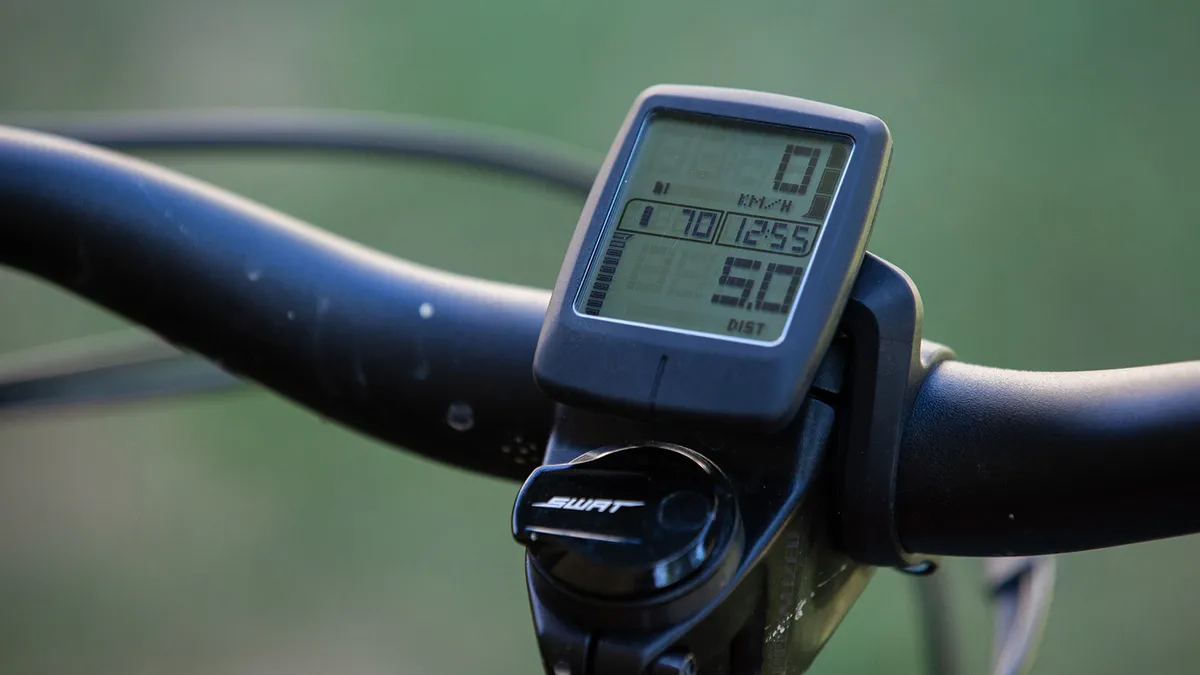
Still available is the Infinite Tune feature which lets you customise the motor characteristics for each pedal assist mode, allowing you to adjust the motor support and peak motor power that's available.
Specialized has a recommended base setting for each mode, which can then be adjusted to suit the rider's needs: Eco: 35 percent support and 35 percent max power; Trail 35 percent support and 100 percent max power; Turbo 100 percent support and 100 percent max power. These can be changed on-the-fly using the app.
Another motor tune in the Mission Control app is how quickly the motor engages when you start pedalling, which is adjustable from instant engagement to a small delay.
The app's Smart Control feature can be used as a fail-safe system on the new bike to make sure you always have enough battery power to make a pre-determined duration or distance. You set the goal and the software uses an algorithm to feed you just enough battery power to reach your target on empty.
In the app, you can also perform basic diagnostics to give you an instant overview on the health of the motor, battery and electronic system. Furthermore, you can record and save your rides, and upload them to Strava.
Specialized Turbo Levo Expert FSR highlights
New lighter crank arms have been developed using aluminium for the Expert model and below while the S-Works model has carbon cranks. Specialized claims a weight saving of over 100g on the aluminium cranks and 200g on the carbon set.

Specialized is still running an 11-speed drive chain because it believes the gear range is more than enough with the extra power provided by the motor, and it avoids the weight penalty of having the necessary NX cassette if it wanted to run 12-speed SRAM Eagle. It's changed to a one-click shifter though to prevent the crunching gears that were common on e-bikes when changing multiple gears at a time in the past.
The Expert model on test here weighs a claimed 21.3kg and the flagship S-Works bike weighs a claimed 19.9kg — 1.8kg lighter than last year's S-Works when using the 500Wh battery and just over 1kg lighter with the new 700Wh battery.
The women-specific Turbo Levo uses the same frame, the only differences are the air spring tune for an on average lighter rider and different touch points, such as grips and saddle.
Specialized Turbo Levo Expert FSR ride impressions

I was treated to some top riding in Croatia where Specialized introduced me to the new Turbo Levo, with one day of wet, slick limestone and mud, mixed with man-made gravel flow trails, and the second day on some of Croatia's best enduro trails. While I only had a day and a half riding, there was enough varied terrain to highlight where the bike stood out and where it came up a little short. I was riding a large Turbo Levo Expert FSR with the 700Wh battery.
My initial impressions sitting on the bike were that it felt very comfortable. The 455mm reach on the large is by no means pushing limits these days, and some might argue for a rider who is a touch shorter than average height, at 173cm, and wears size small Specialized clothes, shouldn't fit a large Specialized bike comfortably. The new figures, however, are a welcome step forward over the previous bikes and the new Turbo Levo was easy to feel at home on.
What was also noticeable was the weight. While it's no featherweight of course, it is possible to pick it up and move it around to hook on a bike rack without feeling like you're trying to manhandle a motocross bike.
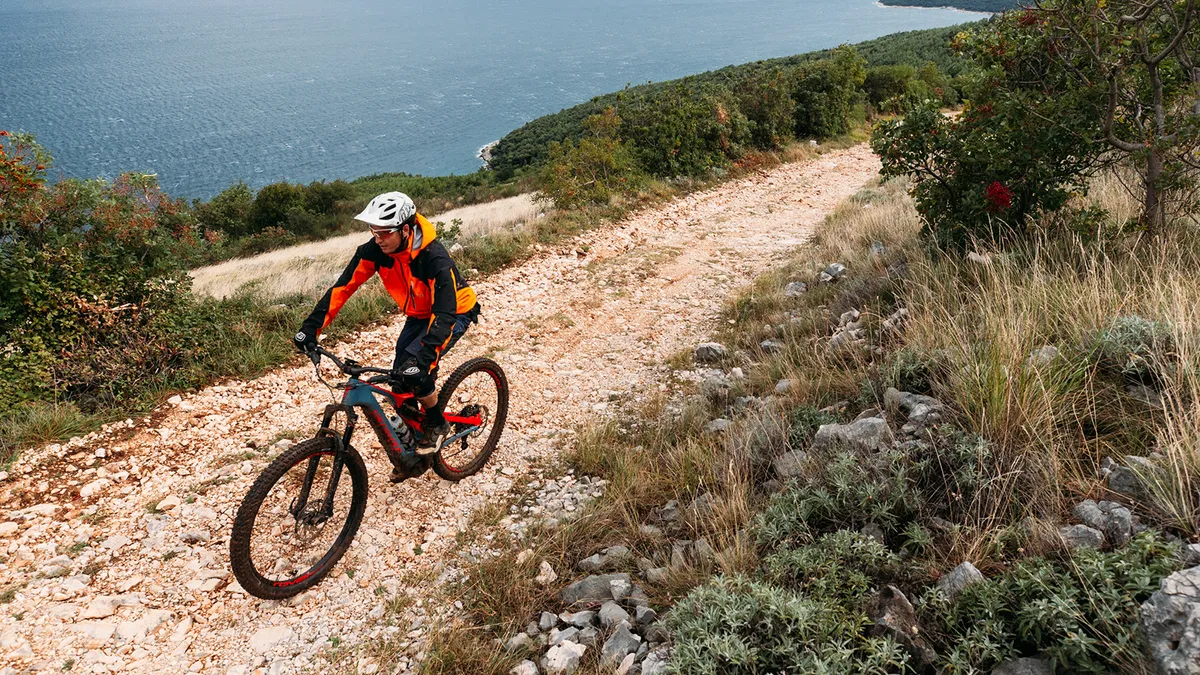
Before I did any riding, I downloaded the new Mission Control app, and while the unfinished beta version wouldn't connect my phone (One Plus) through Bluetooth to the bike, I was able to borrow a phone that did so I could change the settings as I rode. The finished app should be available to download now.
Riding the first climb it was noticeable how strong the motor was, even in Eco mode there was plenty of assistance. This was the mode I found myself using the most. Cruising up double track forest paths the motor ran silently and gave you all the assistance you required.
Shifting into Trail mode and the power almost needed controlling around tight switchbacks. With the stronger motor, longer front centre and shorter chainstays, the bike wanted to understeer and the front wheel would wash out a little on the loose surface. I dropped the handlebars to help weight the front wheel more, and with a light drag of the back brake in certain situations, that seemed to cure the understeer.
Turbo was mostly saved for grin-inducing fun on uphill berms, where riding over 20kph uphill on loose gravel was one of the bike's plus points. Also, when you get to that short, steep bank or technical climb, the power in Turbo can sometimes save a lack of skill.

One thing to note though is to be careful of body position, because the motor is strong enough in Turbo mode to lift up the front wheel when you're not weighing it on a steep technical incline.
The power delivery of the new 2.1 motor was smooth and controlled, and I liked the ability to adjust when the pedal assist kicked in. I chose the engagement to be as quick as possible, and enjoyed having the extra assistance right there on tap when exiting slower corners or putting the power down to get up a short, steep incline.
The one-click gear shifting worked well, and there was never any crunching of the gears even under hard pedalling with the motor throwing out more power than my legs.
Flicking through the modes was simple with the handlebar Trail remote, although I felt the ergonomics could be improved slightly. Shifting the pedal-assist button from under the mode select buttons to the side would allow you to rotate the remote to a more user-friendly position.

Talking of the walk mode, it got a good test on a climb that was just too steep and slippery to find the traction needed to clear in one. It really did pull the bike up and I didn't notice any delay pressing the button and the motor kicking in. Just watch out for the turning pedals as the bike moves forward.
While the RockShox Deluxe RT3 shock did have a lever to firm up the low speed compression for climbing, I never felt there was a need to use it.
On the descents is where I could see if Specialized had stuck to the goal of making a mountain bike first and a pedal assist bike second. While the motor and the uphill climbing ability of the bike was very good, pointing the bike down and along the trail was where the new frame, wheel size and weight saving made the most significant impact.
Riding the Turbo Levo it's easy to forget you're on an e-bike. The geometry promoted confidence and gave a stable balanced ride, while the short chainstays kept the bike agile and the reach, for me at least, gave plenty of room to move around, something I feel is more necessary on 29ers.
The progressivity of the linkage and RX tune on the RockShox Deluxe RT3 shock, along with 150mm of travel, made the bike feel very capable over rough ground. You can run a high percentage of rear sag (I went up to 40 percent) and still only found the limit of the travel off of one hard drop.
By the end of the second day, I was wishing I could run a bigger travel fork than the RockShox Pike RC29 with 150mm of travel, and you can because the frame is rated for a 160mm single crown fork.
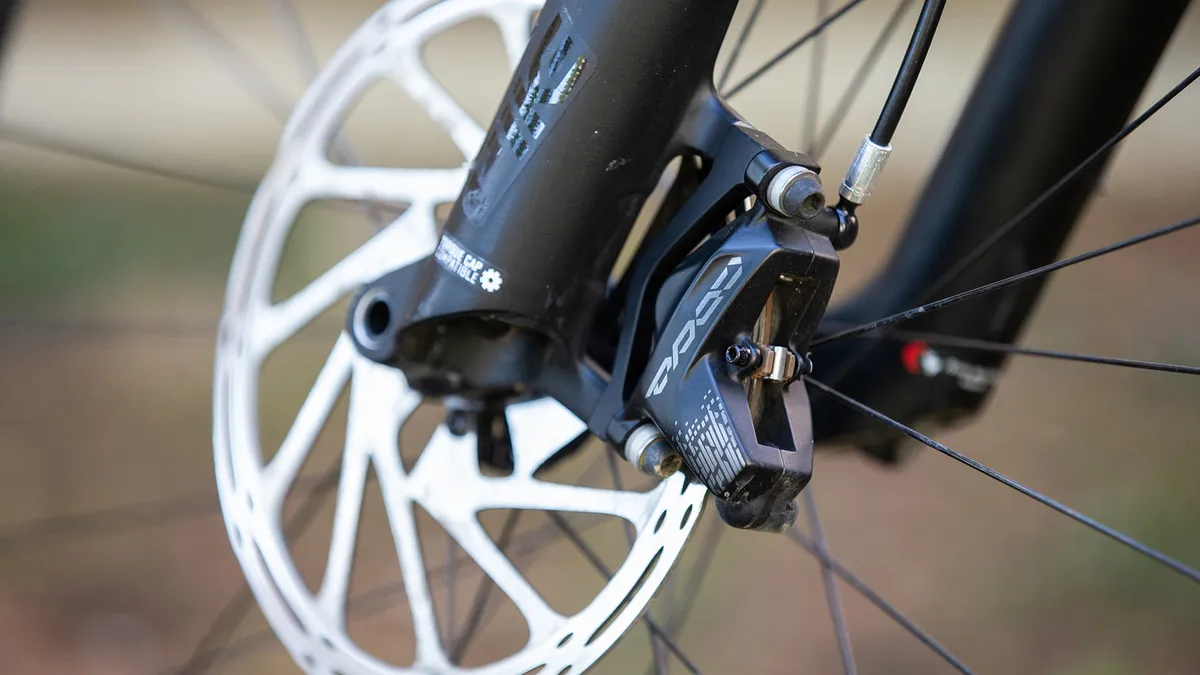
The Code R brakes were plenty powerful to stop and slow down, and they never suffered any pump or fade when pulling hard on the anchors.
The 2.6in Butcher tyres gave a good connection to the trail, you could still feel what was happening under the tyres, yet they had enough support for the extra weight.
I never felt under gunned with the 11-speed 10-42t cassette matched with the 32t chainring. Finishing kit from Specialized and Roval wheels completed a competent bike.
Specialized Turbo Levo Expert FSR early verdict
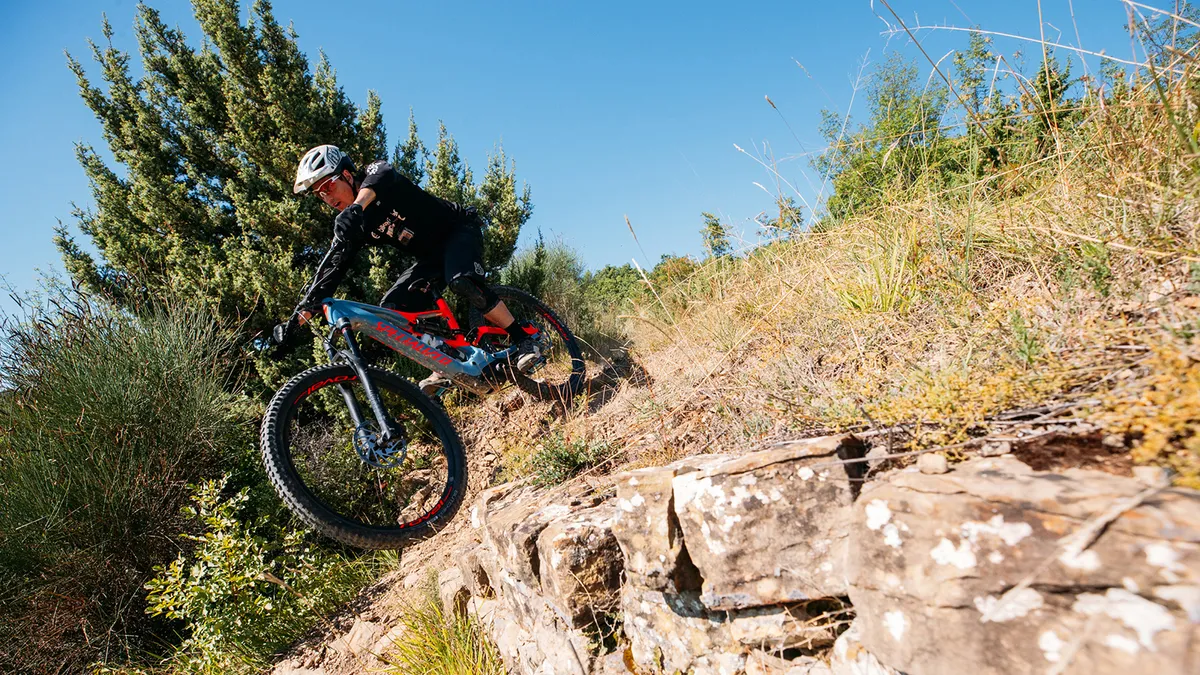
The culmination of updating almost every part of the Turbo Levo has resulted in an impressive bike. The weight saving, updated geometry, new motor, battery, electronics and the smooth integration of how all these parts communicate and work together really have made a bike that feels and rides like a traditional mountain bike which will powerfully assist you back to the top of the hill.
The Turbo Levo can tackle a wider variety of trails than before and with the bigger battery you can go further, but it does take a descent riding position to get the most out of riding up technical terrain, and, with the beefier frame, it’s almost the forks that stop this from reaching its full potential.
Specialized Turbo Levo Expert FSR range and pricing at a glance
The Specialized Turbo Levo range is available now.
- Turbo Levo S-Works FSR: £9,999/ €10,999 / $12,050 / AU$15,000
- Turbo Levo Expert FSR: £7,250 / €7,999 / $8,250 / AU$11,500
- Turbo Levo Comp Carbon FSR: £5,999 / €6,799 / $6,950 / AU$9,500
- Turbo Levo Comp FSR: £4,999 / €5,699 / $5,950 / AU$N/A
- Turbo Levo FSR: £4,000 / €4,499 / $4,950 / AU$7,000
- WM Turbo Levo Comp FSR: £4,999 / €5,699 / $5,950 / AU$N/A
- WM Turbo Levo: £4,000 / €4,499 / $4,950 / AU$7,000

